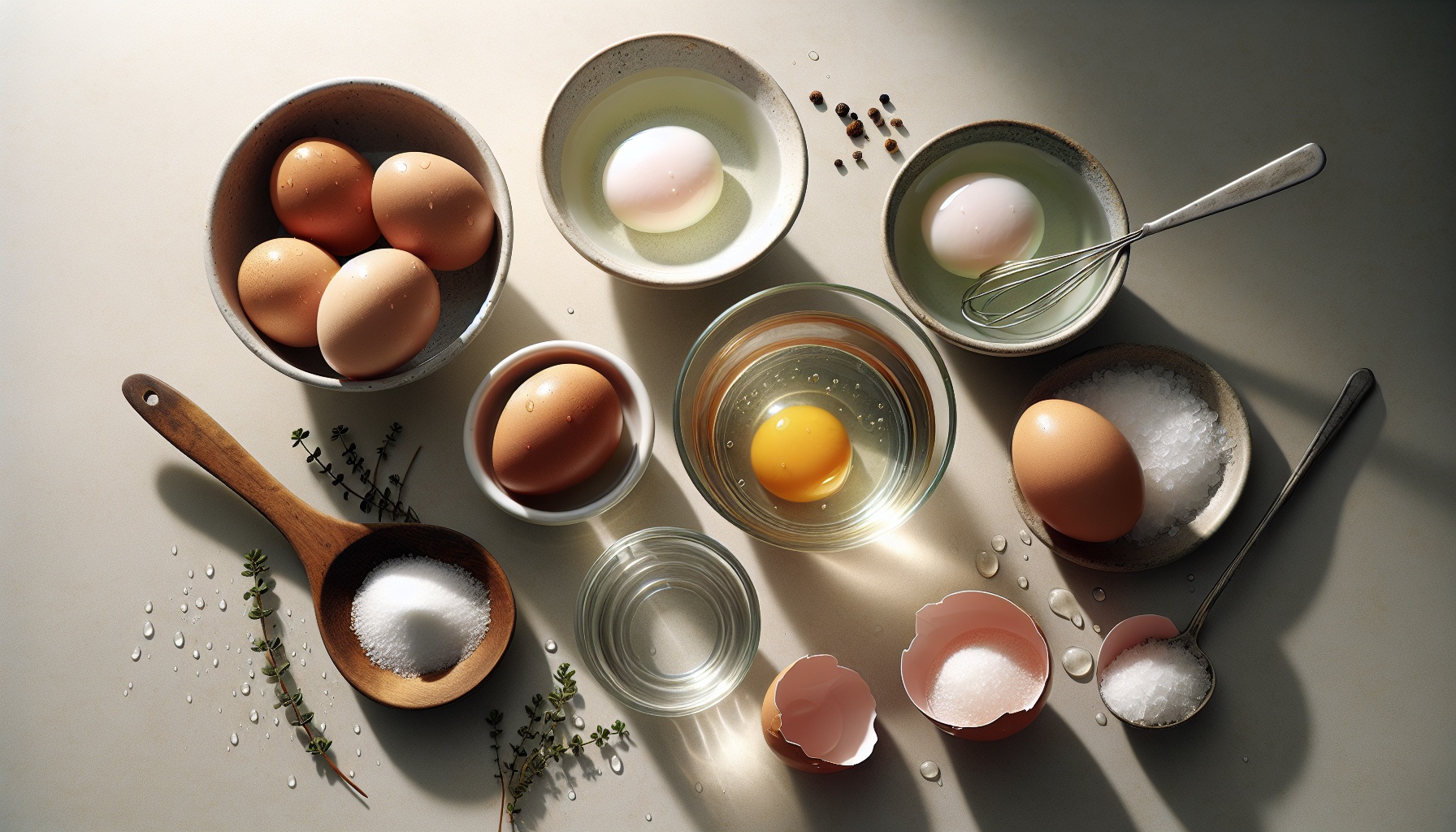
How to Make Perfect Poached Eggs
Ready to crack the code on perfect poached eggs? Don’t let their fancy reputation scare you off! With my step-by-step guide, you’ll master this silky, restaurant-worthy breakfast star in no time. Let’s dive into the pot and whip up some egg-cellent bites together!
4.7 out of 5 (3 ratings)

Prep Time
5 minutes
Cook Time
5 minutes
Servings
4 servings
Cuisine
Global
Ingredients
- •4 large eggs
- •4 cups water
- •1 tablespoon vinegar (white or apple cider)
- •Pinch of salt (optional)
Instructions
- 1
Bring water to a gentle simmer in a medium-sized saucepan. The water should be about 2-3 inches deep.
- 2
Add the vinegar to the simmering water. This helps the egg whites coagulate quickly.
- 3
Crack each egg into a small bowl or ramekin to prevent yolks from breaking.
- 4
Using a spoon, swirl the simmering water to create a gentle whirlpool.
- 5
Carefully slide one egg into the center of the whirlpool. Let it cook undisturbed for 3-4 minutes, or until the whites are fully set and the yolk is still soft.
- 6
Use a slotted spoon to gently lift the poached egg out of the water and transfer it to a plate lined with a paper towel to drain excess water.
- 7
Repeat the process with the remaining eggs, ensuring the water stays hot but not boiling between batches.
- 8
Season the poached eggs with a pinch of salt, if desired, and serve immediately on toast, salad, or as part of a dish.
Nutrition Information
Calories
70 calories per egg
Protein
6g per egg
Carbs
0g per egg
Fat
5g per egg
Frequently Asked Questions
Q: Why is vinegar added to the water when poaching eggs?
A: Vinegar helps the egg whites coagulate more quickly, which keeps them from spreading out in the water. It’s especially helpful if your eggs aren’t super fresh, as fresher eggs naturally hold their shape better.
Q: Can I substitute vinegar with something else?
A: Yes, you can use lemon juice as a substitute for vinegar. Both have an acidic component that helps the egg whites firm up. If you prefer not to use any acid, you can still poach eggs, but the whites may spread out more in the water.
Q: How do I prevent the poached eggs from sticking to the bottom of the pan?
A: To prevent sticking, make sure the water is deep enough (2-3 inches) and keep it at a gentle simmer, not a boil. Swirling the water into a whirlpool also helps keep the egg suspended in the center of the pan, away from the bottom.
Q: What should I do if the egg whites separate in the water?
A: If the whites separate, it could be due to overly vigorous water movement or using older eggs. To fix this, use fresh eggs and ensure the water is only gently simmering. Also, try cracking the egg into a small bowl first and sliding it into the water close to the surface to minimize disruption.
Q: Can I poach multiple eggs at the same time?
A: Yes, you can poach multiple eggs at once, but it’s best to skip the whirlpool method in this case. Crack each egg into a separate ramekin and slide them gently into the simmering water one at a time, leaving space between them. Keep an eye on the cooking time and remove each egg as it’s done.
Q: How do I store poached eggs if I want to make them ahead?
A: To store poached eggs, transfer them to an ice water bath immediately after cooking to stop the cooking process. Once cooled, store them in a container of water in the refrigerator for up to 2 days. To reheat, place the eggs in hot, not boiling, water for about 1 minute before serving.
Q: What are some serving suggestions for poached eggs?
A: Poached eggs are incredibly versatile! Serve them on avocado toast, over a salad, with roasted vegetables, or as part of eggs Benedict. You can also top soups or grain bowls with poached eggs for added richness and protein.
Make This Recipe Your Own
AI Chef Assistant
Get real-time cooking guidance and ingredient substitution tips from our AI chef
Smart Scaling
Instantly adjust serving sizes and quantities to match your needs
Ingredient Swaps
Customize recipes with AI-powered ingredient alternatives and substitutions
Search for "How to Make Perfect Poached Eggs" in the DigiDish app to get started!
More Recipes You'll Love
Get ready to fry up some fun! These crispy acorn squash fritters are golden, crunchy perfection, paired with a zesty app...
Let’s talk golden beets, buttery pastry, and the irresistible combo of maple and Dijon! These tartlets are like tiny bit...
Ready to transform your side dish game? This Honey Roasted Parsnip and Chestnut Mash is cozy, nutty, and kissed with swe...
Get ready to dive into a snack so irresistible, you'll want to make it on repeat! This Golden Pumpkin Seed Romesco Dip i...
Get ready to cozy up with fall flavors! This Spiced Maple Apple Butter brings warm spices and rich maple together, toppe...